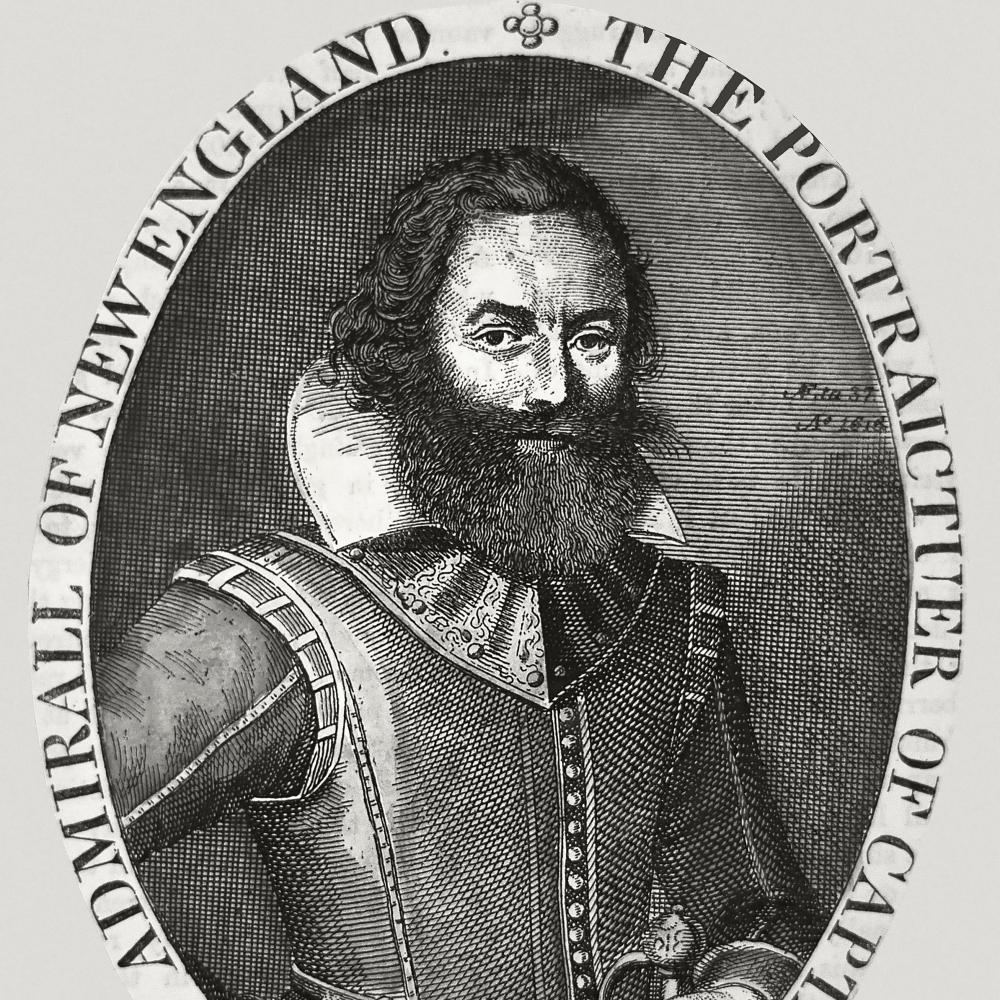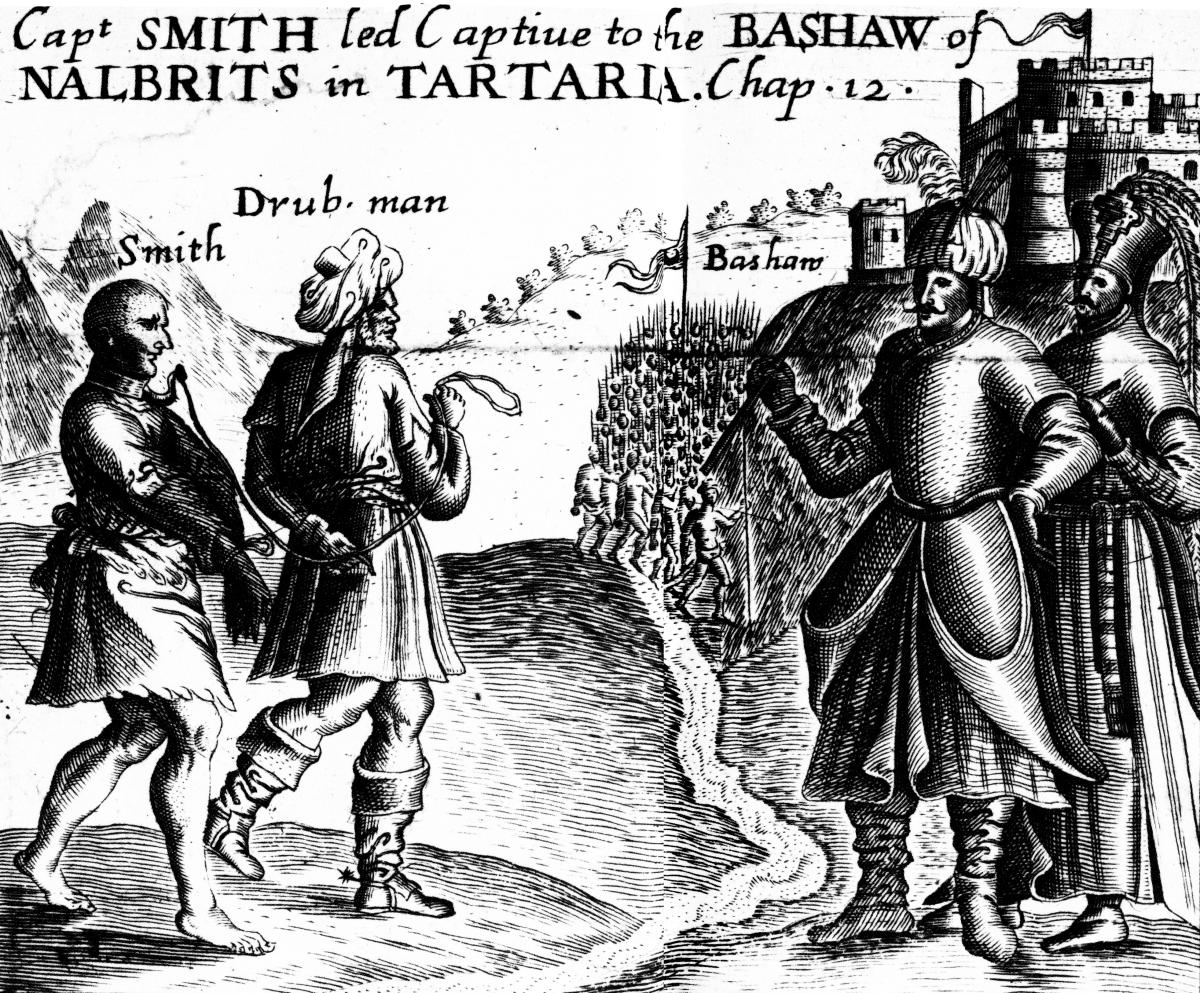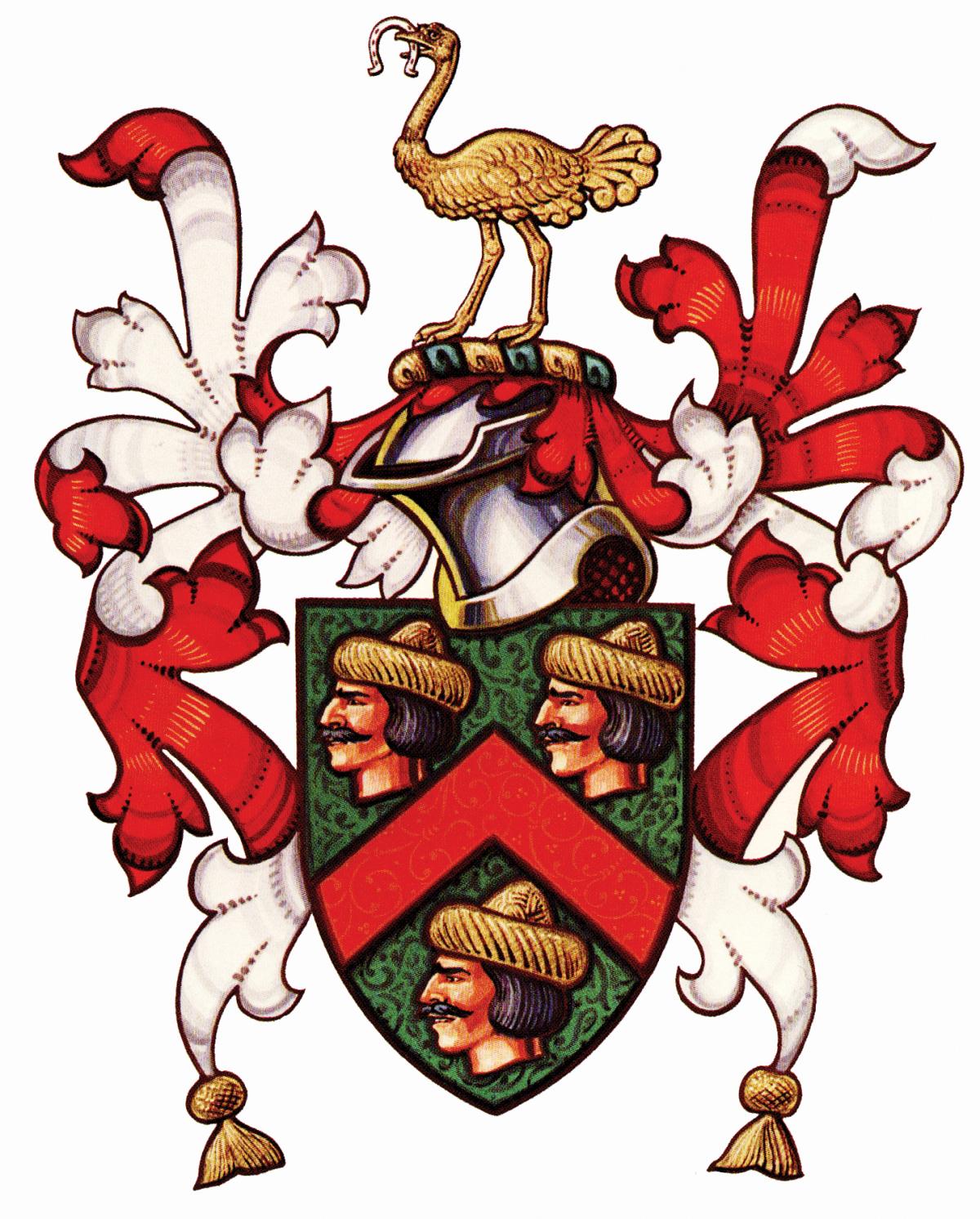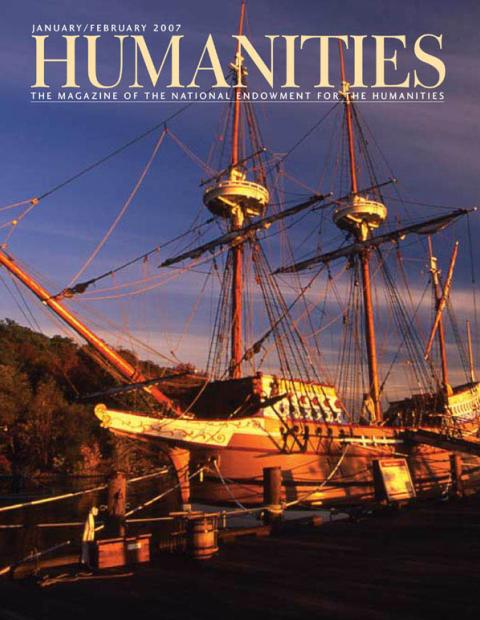More than one hundred men sailed across the Atlantic in 1606 to found the Jamestown colony in Virginia. The roster for the expedition lists fifty-nine of them as "gentlemen." One of those gentlemen, Captain John Smith, wasn't born with his title. He earned it beheading three Turkish soldiers in a series of single combat duels. Suffice it to say, Smith was not your average English gentleman. Before he sailed for the Virginia wilderness and had his famous encounter with Pocahontas, Smith had been a mercenary, a pirate, a slave, and a mutineer.
Most of what we know about Smith's life before Jamestown comes from his The True Travels, Adventures, and Observations of Captaine John Smith (1630). He provides such a daredevil account of his life that critics have sometimes accused him of exaggerating his exploits. But by comparing Smith's own account with letters and documents of the time, scholars such as biographer Philip Barbour have confirmed his story and clarified it. It is an amazing story.
As a young boy, Smith idolized the British explorers such as Sir Francis Drake, who sailed around the world and plundered gold from Spain. "What more would be needed than the cry that the incomparable Drake was off again, to stir the adventurous spirit of thirteen-year old John Smith to action?" asks Barbour. Smith's father, a prosperous farmer in Lincolnshire, did not appreciate his son's wanderlust. After Smith made a number of attempts to run away, his father apprenticed him to a wealthy merchant, hoping to settle him down.
Smith, however, had something a little less conventional in mind. After his father died in 1596, he terminated his apprenticeship and struck out for the Continent, joining a company of English mercenaries that bounced from conflict to conflict. He spent time in France to help keep Henry IV on the throne and fought for the Dutch in their war of independence from Spain.
The time Smith spent abroad taught him that if he wanted to become a gentleman soldier he needed to improve his mind and his military skills. He immersed himself in classical military and political texts, taking Machiavelli and Marcus Aurelius as his models. Theodore Paleologue, the riding master to the Earl of Lincoln, taught him how to handle a horse, hold a lance, and speak Italian. He also passed on to Smith his hatred for the Turks.
In the summer of 1600, the twenty-year old Smith set out again for the Continent, looking for what he called "brave adventures" and a confrontation with the Turks. But before he could fight the Sultan, a chance meeting turned him into a pirate. After exploring France, he headed for Marseilles and booked passage for Italy-the quickest way to reach Hungary where the Austrians and Turks were fighting-only to have the ship sink during a storm. He washed up on an island off Cannes, where he was rescued by a Captain La Roche, whose crew discovered Smith when it came ashore for fresh food and water. Whether it was the prospect of earning money or the captain's charm, by the time the winds changed, Smith had joined La Roche's crew.
Like many French captains who plied the Mediterranean, La Roche engaged in both trade and piracy. After leaving French waters, his ship sailed past Corsica and Sardinia to Alexandria and, at the eastern reaches of the Mediterranean, Alexandretta, the most important trading post in the Levant. Smith was on a journey that few Englishman had made.
A spot of piracy on the way back to France made Smith a rich man. In the waters off Greece, La Roche hailed a Venetian ship and asked to speak with its captain. The Venetian ship interpreted the hail as a prelude to piracy and responded with its cannon. La Roche fired back, destroying the Venetian ship. As it sank, his crew "rescued" its cargo of silks, velvets, jewels, gold, and silver.
When Smith parted ways with the French captain after their four-month sea adventure, he had 500 zecchini in his pocket. After spending some of his new wealth touring Italy, Smith finally made his way to Graz, where he signed up with an Austrian division. In the summer of 1601, his personal campaign against the Turks finally began.
The time that Smith had devoted to studying and training allowed him to become an impressive and creative soldier. During the battle for Limbach, a German fortress town besieged by the Turks, Smith drew on his military readings to devise a signaling system that let his regiment communicate with the Austrian garrison trapped inside. Using the torches, the garrison was told that the Austrian forces sent to liberate them would charge to the east of the town after nightfall. The garrison should be ready to support their attack.
The night of the battle, Smith used string, cloth, and powder to create the illusion of two thousand matchlock muskets firing to the west of Limbach. In the pitch black night, the Turks mistook the flashes of light for an Austrian attack. They moved their forces to the west, leaving the eastern side of town relatively defenseless, and the Austrians moved in. When morning dawned, the Turkish commander realized he'd been defeated, lifted the siege, and retreated. For his contributions to the Austrian victory, Smith was promoted to captain and put in charge of a company of 250 men on horseback.
Smith's inventiveness continued. To help liberate Alba Regalis, the ancient Hungarian capital, he assembled what he called the "fiery dragons"-round earthen pots filled with gunpowder, covered with pitch, brimstone, and turpentine, and coated with musket bullets. Encased in an oil cloth, the pots were set on fire and flung into Turkish lines. As Smith recounted years later, "[I]t was a fearfull sight to be see the short flaming course of their flight in the aire, but presently after their fall, the lamentable noise of the miserable slaughtered Turkes was most wonderful to heare." The bombardment helped break the siege and allowed the Austrians to take the city after a few bloody days of house-to-house fighting. With winter setting in, the Austrian high command decided to send Smith's regiment to Transylvania. It was in Transylvania that one of the more extraordinary events in Smith's life occurred-one that earned him the title of "gentleman."
During the siege of Alba Iulia, waged to oust the Turks from the capital city, Smith engaged in three duels, each ending with the beheading of his opponent. The episode began when a Turkish captain, bored with the monotony of the siege, challenged the Christian officers to "combate with him for his head." Lots were drawn and the honor fell to Smith.
The Turk showed up in the no man's land between the armies dressed in his finest- "his shoulders were fixed with a paire of great wings, compacted of eagle feathers within ridge of silver, richly garnished with gold and precious stones." Smith dispatched him on the first pass. Upset by the loss of his captain, another Turk challenged Smith. The bout began with an exchange of blows and ended with pistol shots. Smith took a round in the breastplate, but his Turkish opponent suffered a debilitating blow to his arm, eventually collapsing. The final duel occurred when Smith gave the Turks a chance to redeem their honor. The contest was settled by the use of battle axes, with Smith triumphing once more. When Smith brought the three heads before the commanding Turkish general-each head mounted on a lance-he was embraced by the general and given a horse and a jewel-encrusted scimitar. The sweetest honor came from Prince Zsigmond Báthory of Transylvania, who granted Smith the right to wear "three Turkish heads" on his shield and bestowed on him the title of "English gentleman." John Smith had succeeded in exchanging "farmer" for "gentleman" by the swing of his sword.
After finally earning the kind of recognition he craved, Smith's world turned upside down a few months later. He had survived the duels and the bloody siege at Alba Iulia, only to be wounded in a skirmish with the Tartars in November 1602. Alerted by his groans, scavengers stripping the corpses rescued Smith from among the heaps of dead. After his wounds healed, Smith was taken to a slave market. As Smith describes it: "we all sold for slaves, like beasts in a market-place; where every merchant, viewing their limbs and wounds, caused other slaves to struggle with them to try their strength." His new master, a Turkish nobleman, decided that Smith would make a lovely present for Charatza Trabigzanda, his Greek mistress in Constantinople. Charatza found her new slave fascinating and mysterious. Smitten, and fearful that her mother would sell him, she sent Smith to her brother, the administrator of an Ottoman fief on the Black Sea. She wanted him, as Smith recounts, "to learne the language, and what it was to be a Turke, till time made her Master of her selfe." Charatza intended for her brother to train Smith to become a bureaucrat so that she could marry him. Christians who converted to Islam and swore fealty to the sultan could have successful- and lucrative—careers in the imperial government.
The brother apparently thought otherwise. He made Smith the slave to the Christian slaves-the lowest of low. Malnourished and abused, Smith began to look for opportunities to escape. His chance came one afternoon when he was threshing wheat in a field some distance from the main house. The brother, out inspecting the work alone, came across Smith and decided to beat him. Smith snapped, a moment that he describes as "forgetting all reason," and smashed in the brother's head with the threshing bat. Knowing that discovery and capture meant torture and death, Smith hid the body under some straw, donned his master's clothes, stole his horse, and rode off into the desert. It would be almost a year before Smith found his way back to England in 1604.
Following his escape, he tracked Báthory down, collecting the money and honors promised him. With the war in Transylvania over, he traveled the German duchies, France, Spain, and North Africa, before jumping a ship for England. He returned to find his homeland engulfed by colonization mania. For a man like Smith, who grew up worshipping English explorers, the chance to join an expedition was an opportunity not to be missed. It would also give him an opportunity to prove himself to his countrymen. The English nobility sneered at his hard-earned title. To them, he remained John Smith, yeoman farmer.
Smith made it a point to became friendly with the men interested in colonizing Virginia, including Henry Hudson, the famous navigator, Richard Hakluyt, a geographer, and Bartholomew Gosnold, a privateer who led the campaign to settle Virginia. In April 1606, the Virginia Company, which was financed by London's merchant class, received a royal charter granting it permission to colonize part of the east coast of North America. Smith's connections, skills, and willingness to invest his own money helped him secure a spot in the expedition and an appointment to the colony's governing council.
Smith had found the obsession with privilege a tiresome aspect of his life in England, but it became life threatening during the first year of the expedition. In December 1606, three ships carrying the expedition sailed for Virginia. The feisty Atlantic turned what should have been a month-long journey into a five-month ordeal. The slow voyage allowed disease to fester in the cramped quarters and factions to form among the colonists. When the expedition docked at the Canary Islands to take on provisions, Smith was put in chains. He was charged with plotting to murder his fellow council members and make himself king of Virginia. The records from this part of the journey are somewhat confused-and also intentionally obscure. It appears that Smith, a commoner with strong opinions, ran afoul of Edward Maria Wingfield, a gentleman and one of the lead investors. Wingfield was the type of man who expected and demanded deference from men of Smith's rank. When Smith refused to submit, Wingfield put him in chains, where he remained for the final thirteen weeks of the voyage to Virginia.
The colonists spied the coastline of Virginia on April 26, 1607. After some scouting about, for which Smith was released to assist, they settled on a site forty miles up the James River. On May 13, 1607, they founded Jamestown, Britain's first permanent settlement in North America. Food was a problem from the beginning. The long voyage had depleted most of the colony's stocks and the colonists had arrived too late in the planting season to make up for it. On top of that, the class discord that led to Smith's being shackled permeated daily life in the settlement. Many of the gentlemen refused to work-that was for laborers and tradesmen. It did not help matters that Wingfield was elected the colony's first president. Within six months, fifty colonists had died from illness stemming from a combination of bad diet, disease-bearing mosquitoes, unsuitable clothing, and heat.
Smith's refusal to let the colony starve led to his encounter with Pocahontas. He began trading for maize with the local Indians and exploring the region looking for additional food sources. In December 1607, while mapping the Chickahominy River and hunting for deer, Smith and his party were ambushed by a band of Powhatan Indians. They captured Smith and delivered him before Wahunsunacock, the Powhatan chief, to decide his fate. Differing accounts describe what happened next. One telling has Pocahontas, the chief's young daughter, placing herself between Smith and his intended executioner. Another telling suggests that Wahunsunacock, impressed with Smith's bravado, adopted him into the tribe. Whatever happened that fateful day, a friendship between Smith and Pocahontas developed and that bond kept the Jamestown colony from starving.
In September 1608, Smith was elected colony president, succeeding Wingfield. He used his practical experience from his years as a farmer and a soldier to put the colony on solid footing. Under his direction, tar, pitch, and soap ash were made, a well was dug, houses were built, fishing parties sent out regularly, and acres of crops were planted. "More done in 3 monthes then 3 yeares" observed a contemporary account of the colony. Not everyone welcomed Smith's ascendancy, particularly given his attitude toward work. He demanded greater discipline of the colonists, announcing that "he that will not worke shall not eate." Colonists had previously been fed from a common storehouse whether they worked or not.
In September 1609, Smith was injured when his powder bag exploded, ripping a nine-inch square chunk of flesh from his thigh. He jumped into the river to put out the fire only to almost drown from the shock. The injury forced his return to London, but even without it, Smith likely would not have been long for the colony. The company's shareholders in London instituted a reorganization of the colony's leadership. The new appointees sent by the London branch in the summer of 1609 had little regard for Smith, making the final months of his presidency a mutinous affair. Despite his experiences in Jamestown, Smith remained an advocate for colonization. He made one more trip to North America in 1614, this time to a region that he named New England.
While Smith had made a career for himself by using his sword, the use of his pen proved to be his enduring legacy. His books recording his experiences in North America, A Map of Virginia (1612) and A Map of New England (1616) were influential in promoting English settlement. Both the Puritans and the Pilgrims carried his maps and books with them when they crossed the Atlantic.
By the time Smith died in 1631, English settlement in North America was flourishing. The Jamestown colony was thriving, having discovered tobacco farming, and New England began to take shape with the founding of Plymouth, Salem, and Boston. The yeoman farmer who dreamed of brave adventures and fighting the Turks had instead helped England secure a foothold in the New World.




